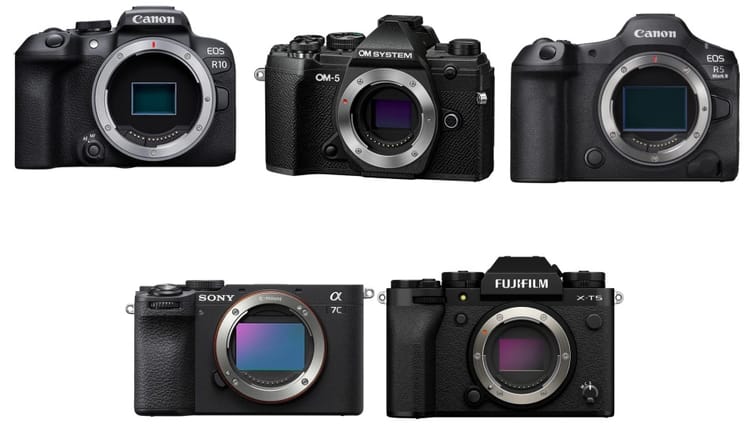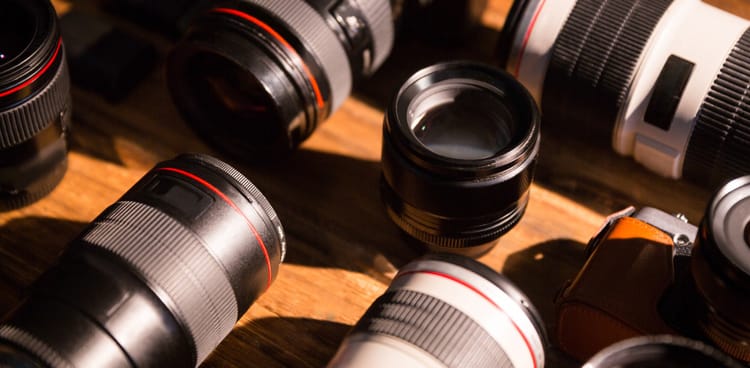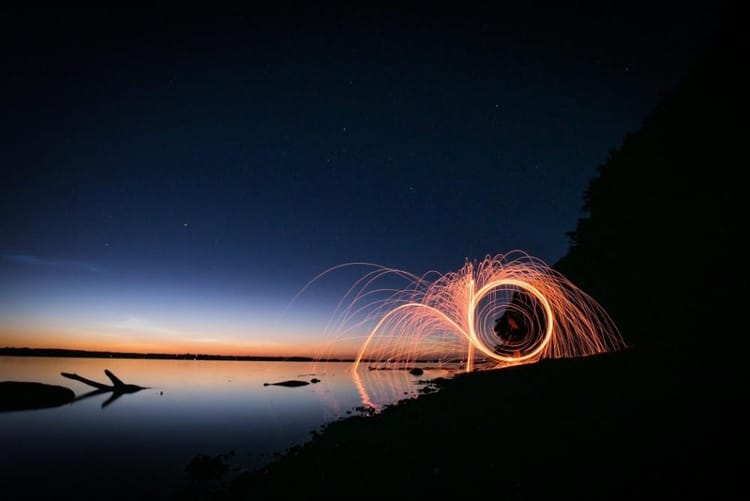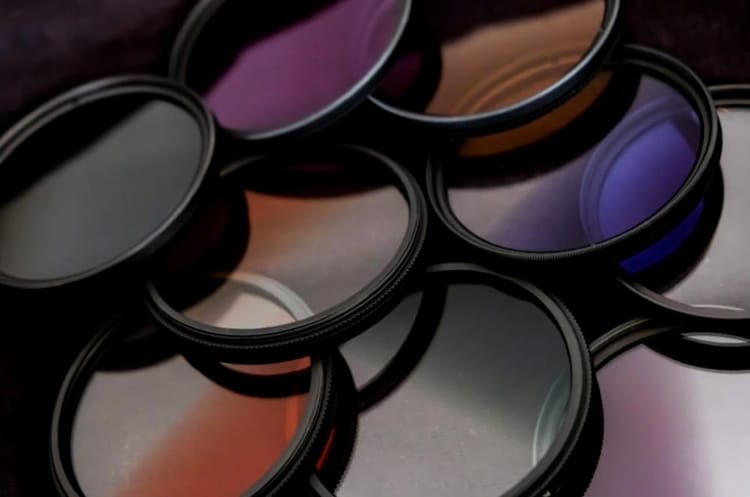Top 5 Cameras for Stunning Wedding Photography
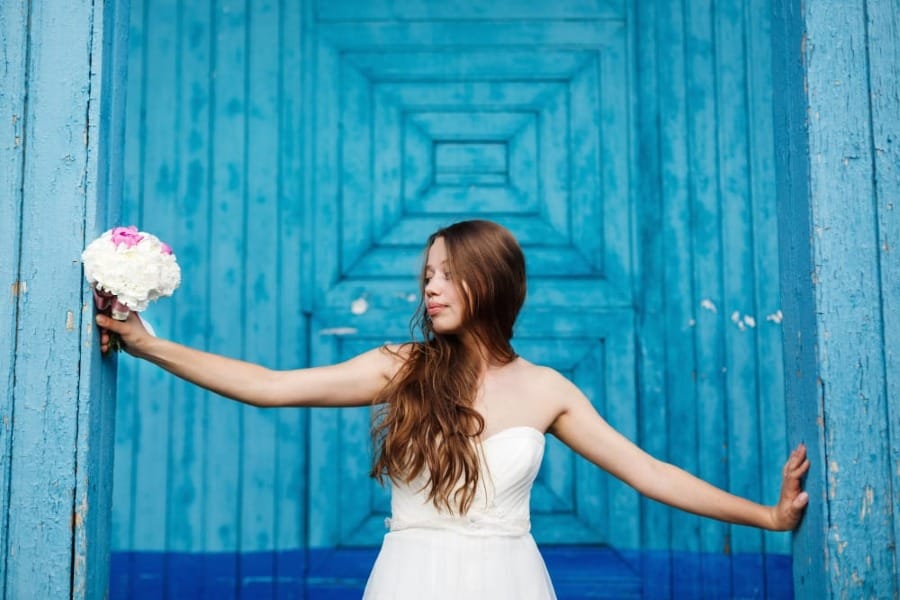
Introduction
Choosing the right camera for wedding photography can make a world of difference in the quality and efficiency of capturing a couple’s special day. Wedding photography is a unique genre that demands versatility, reliability, and the ability to perform under various lighting conditions. Unlike other photography fields, weddings offer limited room for error—moments like the exchange of vows, the first kiss, and the emotional reactions of loved ones happen in a heartbeat. Missing these shots due to slow focusing or poor low-light performance can be devastating for both the photographer and the couple.
In 2024, camera technology continues to advance, offering even more options with cutting-edge features tailored to meet these specific demands. From ultra-fast autofocus systems that lock onto subjects in real time to high-resolution sensors that capture every detail in both shadows and highlights, modern cameras have evolved to help wedding photographers work seamlessly. Additionally, many wedding photographers today are asked to provide both photo and video coverage, making hybrid capabilities in cameras an attractive and often necessary feature.
In this post, we’ll explore the top five cameras for wedding photography in 2024. Each camera on this list has been selected for its superior performance, image quality, and feature set that aligns with the rigorous demands of wedding photography. Whether you’re a seasoned professional or a newcomer to the field, these cameras offer the reliability and flexibility needed to capture every magical moment with precision and style.
Affiliate Disclaimer
This blog post may include1links to affiliate sites. If you click on an affiliate link and make a purchase, we may earn a small commission or receive other compensation at no extra cost to you. Please note that many of the links on our site are affiliate links. Our use of these links does not impact the products, services, or websites we recommend to you. This disclaimer covers all forms of communication with you, including our website, email, phone, social media, products, and other platforms.
Section 1: Key Features to Look for in a Wedding Photography Camera
Selecting the right camera for wedding photography involves prioritizing features that can handle the diverse and sometimes challenging conditions encountered in this unique field. Wedding photographers need a camera that performs well in low-light settings, has fast autofocus, and provides excellent image quality. Here are the essential features to consider when choosing a camera for wedding photography.
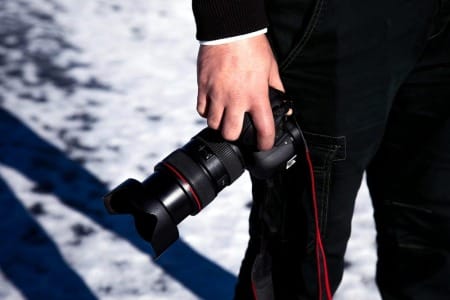
Low-Light Performance
Weddings often include venues with dim lighting, such as churches, banquet halls, or outdoor receptions that extend into the evening. A camera’s ability to handle low light is crucial for producing clear, vibrant images without excessive noise. Full-frame cameras typically excel in low light due to their larger sensors, which capture more detail and manage noise better at high ISO settings. This capability is essential in wedding photography, where a flash may not be welcome or practical during key moments, such as the ceremony itself. Look for a camera with high ISO performance, ideally one that can handle ISO levels upwards of 6400 without significant quality loss.
Fast and Accurate Autofocus
Weddings are dynamic, with subjects moving quickly and often unpredictably. The ability to capture fleeting expressions, quick movements, and key moments in real time is fundamental. Advanced autofocus systems that track subjects and adjust focus quickly are invaluable. Cameras with features like eye-tracking or continuous subject tracking (even with fast movement) can significantly improve your success rate. For wedding photography, look for cameras with advanced autofocus points, real-time tracking, and eye detection, especially in low light. These capabilities ensure you don’t miss important shots, like a glance between the bride and groom or a child rushing down the aisle.
Dynamic Range and Image Quality
A broad dynamic range allows a camera to capture details in both the highlights and shadows of an image, which is essential when photographing weddings with a mix of indoor and outdoor scenes. Weddings can have harsh midday sunlight during outdoor shoots or candle-lit receptions with dark shadows. Cameras with excellent dynamic range capabilities ensure that details in the bride's white dress and the groom’s black tuxedo are preserved without overexposing or underexposing crucial elements. High resolution (around 24MP and above) also enables photographers to crop images without losing detail, an advantage for delivering a variety of compositions in post-production.
Battery Life and Dual Card Slots
Given the lengthy nature of weddings, photographers need cameras with substantial battery life to avoid interruptions during the event. Running out of power mid-shoot can mean missing critical moments, so a camera that can handle all-day shooting is ideal. Additionally, dual card slots provide added security by allowing photographers to create immediate backups. This feature is essential for wedding photography because it ensures that, even in the unlikely event of a card failure, all images are saved safely. High-capacity batteries and dual card slots reduce the risk of data loss and allow photographers to focus on their work without constant worry.
Portability and Weather-Sealing
Weddings can take place in various environments, from beaches to churches to outdoor gardens. A lightweight, portable camera is beneficial for maneuvering through crowds and quickly transitioning from one setting to another. Additionally, weather-sealing provides added protection from unexpected rain, dust, or humidity, ensuring the camera can handle outdoor elements without compromising performance. For photographers who shoot both indoor and outdoor events in one day, weather sealing and portability become indispensable.
Video Capabilities
With an increasing demand for hybrid shooters, video capabilities have become a key feature for wedding photographers. Many clients now expect short video clips or highlight reels alongside their photo packages. Cameras with 4K (or higher) video resolution, good in-body stabilization, and high-quality autofocus for video can help wedding photographers deliver additional services. A camera’s video capabilities should be flexible, offering options for different frame rates and easy transitions between photo and video modes. For photographers looking to add video services to their wedding photography packages, selecting a camera with strong video features is an excellent investment.
In summary, a camera for wedding photography needs to be versatile, reliable, and high-performing across a range of settings. By focusing on features like low-light performance, fast autofocus, dynamic range, battery life, durability, and video capabilities, photographers can ensure they are well-prepared to capture the magic and beauty of each wedding day.
Section 2: The Top 5 Cameras for Wedding Photography in 2024
When it comes to selecting the best cameras for in 2024, photographers have a wealth of options tailored to the unique demands of the profession. Each camera on this list offers features that make it highly suitable for capturing the fleeting, emotional moments that weddings are known for. Here, we explore five top cameras that stand out in image quality, low-light performance, autofocus, and video capabilities, all crucial for wedding photography.
Canon EOS R5
The Canon EOS R5 has quickly become a favorite among professional photographers and with good reason. This camera packs a powerful 45MP full-frame sensor, delivering exceptional image quality, sharpness, and detail, even in low light. With impressive 8K video capabilities, it’s also perfect for wedding photographers who offer video services.
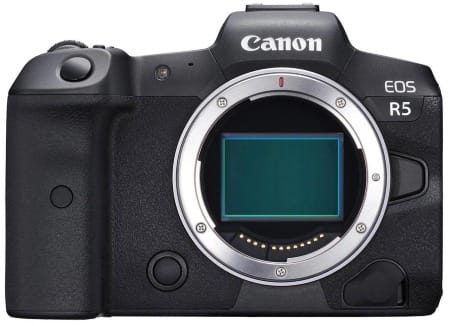
- Key Features:
- 45MP Full-Frame Sensor: High resolution allows for detailed images and versatile cropping options.
- Dual Pixel CMOS AF: Canon’s advanced autofocus system ensures smooth, accurate focus tracking.
- 8K Video Recording: Ideal for hybrid shooters offering both photo and high-quality video.
- In-Body Image Stabilization (IBIS): Allows for handheld shooting, reducing camera shake in low light.
- Pros and Cons: The Canon EOS R5’s high resolution and excellent autofocus make it ideal for weddings, where image quality and focus precision are essential. However, its premium price and somewhat heavy body may be a drawback for photographers who prefer lightweight setups.
- Ideal Scenarios: Best suited for photographers looking to capture high-resolution images and those who also provide video as part of their wedding photography package.
Sony A7 IV
The Sony A7 IV is a versatile camera offering an excellent balance of features, making it highly popular for wedding photography. With a 33MP full-frame sensor, it delivers great image quality and low-light performance, all in a relatively compact body. Its real-time Eye AF and animal tracking add to its appeal for capturing moving subjects seamlessly.
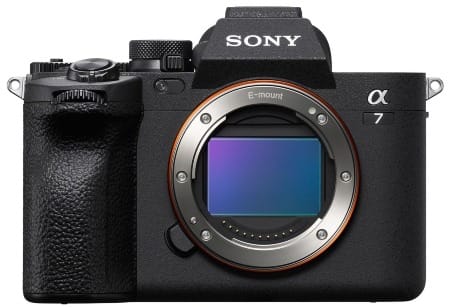
- Key Features:
- 33MP Full-Frame Sensor: Strikes a balance between resolution and low-light capabilities.
- Real-Time Eye AF: Tracks eyes with remarkable accuracy, especially helpful for spontaneous moments.
- 5-Axis IBIS: Stabilization for handheld shots in challenging lighting.
- 4K 60p Video: Offers hybrid capabilities for photographers who shoot both photo and video.
- Pros and Cons: The A7 IV’s autofocus and low-light performance are strengths for wedding photography. However, its 4K video has a slight crop, which may be limiting for some videographers.
- Ideal Scenarios: This camera is excellent for photographers looking for versatility, especially those working in fast-paced environments where subjects move frequently.
Nikon Z9
Nikon’s flagship mirrorless camera, the Z9, is built for professional use, making it an excellent choice for serious wedding photographers. With a 45.7MP stacked CMOS sensor and outstanding video capabilities, the Z9 caters to photographers who need fast performance and high image quality.
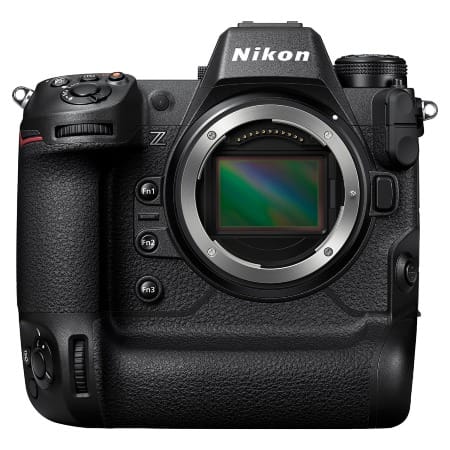
- Key Features:
- 45.7MP Stacked CMOS Sensor: Captures intricate details and preserves quality for large prints.
- 20fps RAW Shooting: Perfect for capturing fast action and emotional moments.
- 8K Video Recording: No overheating issues, even with prolonged video sessions.
- Built-in Vertical Grip: Enhanced ergonomics for long shoots and stability.
- Pros and Cons: The Z9’s performance in dynamic range and continuous shooting speed is outstanding, though its larger, heavier body may not suit photographers seeking a compact setup.
- Ideal Scenarios: Great for photographers who need rapid burst rates and top-tier image quality. The Z9’s robust build and dual card slots make it reliable for long, demanding wedding photography sessions.
Fujifilm X-T5
For photographers seeking a lighter, more affordable camera without sacrificing quality, the Fujifilm X-T5 is an excellent choice. Its 40MP APS-C sensor offers high resolution and beautiful color rendition, especially for skin tones, which is a big plus in wedding photography.
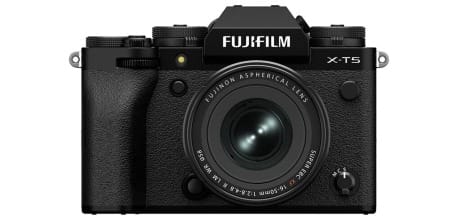
- Key Features:
- 40MP APS-C Sensor: Provides impressive detail, although low-light performance isn’t as strong as full-frame.
- Fujifilm Color Science: Renowned for its color profiles, delivering pleasing skin tones.
- 6K Video: Offers good quality video in a smaller, budget-friendly body.
- Compact Design: Lightweight and easy to carry, ideal for long shoots.
- Pros and Cons: The X-T5 is a great budget option, though its APS-C sensor may not handle low light as well as full-frame counterparts. Its compact size is a benefit for photographers who prefer portability.
- Ideal Scenarios: Ideal for photographers who prioritize a lightweight setup and excellent color science on a budget.
Panasonic Lumix S5 II
The Panasonic Lumix S5 II is a fantastic full-frame option for wedding photographers who want solid video performance without the hefty price tag. With a 24.2MP sensor, it balances image quality and performance, while its advanced video features make it a great choice for hybrid wedding photographers.
- Key Features:
- 24.2MP Full-Frame Sensor: Good resolution for general photography and moderate cropping.
- 4K 10-Bit Video: Great for wedding videography, with detailed, smooth footage.
- Improved Autofocus: New phase-detection AF offers better focusing in video and low light.
- Dual SD Card Slots: Allows for on-the-go backup, essential in wedding photography.
- Pros and Cons: The S5 II’s strong video features make it appealing for hybrid shooters, although its autofocus, while improved, still lags slightly behind competitors.
- Ideal Scenarios: Suitable for photographers looking for a budget-friendly full-frame that balances photo and video quality.
Each of these cameras excels in different areas, making them top choices for wedding photography. From the high-resolution Canon EOS R5 for detail lovers to the versatile Panasonic Lumix S5 II for those who need reliable video, each model is tailored to the demands of a wedding day. By selecting a camera that aligns with their shooting style, photographers can ensure they’re equipped to capture every unforgettable moment.
Section 3: How to Choose the Right Camera Based on Shooting Style
Choosing the best camera for wedding photography depends not only on technical specifications but also on each photographer’s unique shooting style and specific requirements. Wedding photographers often face varied environments and fast-paced scenarios, so understanding what you prioritize in a camera can help narrow down the options. Here are some key factors to consider when selecting the perfect camera for wedding photography.
Portability and Compactness
For wedding photographers who prioritize ease of movement and discretion, a lightweight, compact camera can be invaluable. Portability matters, especially during long wedding days when photographers move between locations, capture candid shots or need to navigate tight spaces. Cameras like the Fujifilm X-T5 are popular among those looking for portability without sacrificing image quality. The compact design of such cameras makes it easier to carry multiple lenses and move around without fatigue. If your wedding photography style involves moving swiftly to capture spontaneous moments, opting for a lighter camera might be the best choice.
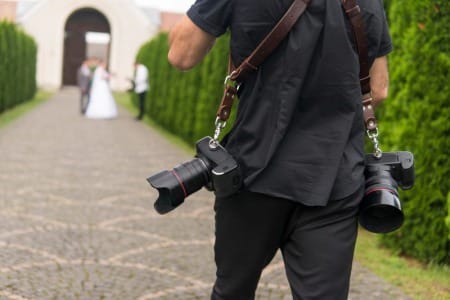
Resolution and Cropping Flexibility
Resolution is an important factor, especially for photographers who want the freedom to crop images without losing detail. High-resolution cameras like the Canon EOS R5 and Nikon Z9 are ideal for wedding photography because they allow photographers to capture intricate details in dress fabrics, floral arrangements, and facial expressions. The ability to crop images without sacrificing quality is a huge advantage during post-production, as it allows for creative flexibility in framing shots. For photographers who regularly print large-format images or require high levels of detail, investing in a high-resolution camera will be worthwhile.
Video Requirements
Many wedding photographers are now offering hybrid services, capturing both photographs and short video clips. Cameras like the Panasonic Lumix S5 II or Canon EOS R5 offer exceptional video quality with features like 4K and even 8K recording options, allowing photographers to add videography services to their offerings. Video capabilities can be an important consideration if you want to capture memorable moments like the bride and groom’s first dance or guest speeches. A camera that can switch seamlessly between photo and video modes is beneficial for wedding photography professionals who provide clients with a range of media options.
Autofocus and Low-Light Performance
For photographers who shoot in challenging lighting conditions—like dimly lit churches or evening receptions—excellent autofocus and low-light performance are essential. Cameras such as the Sony A7 IV excel in low light, with reliable autofocus that ensures clear, sharp images, even in shadows or dim environments. If your wedding photography style involves lots of indoor or evening shots, consider a camera with strong low-light capabilities and advanced autofocus. This will help you capture emotive moments in any lighting situation, from candle-lit dinners to lively dance floors.
Ergonomics and Battery Life
Shooting a wedding can involve hours of holding and maneuvering the camera, making ergonomics a crucial factor. Cameras with comfortable grips and intuitive button layouts allow photographers to focus on the event without struggling with controls. Long battery life is equally important, especially for full-day weddings. Cameras like the Nikon Z9 with a built-in vertical grip provide added comfort and additional battery power, allowing photographers to shoot uninterrupted for longer periods. If you often shoot long events without frequent breaks, consider a camera that offers both ergonomic comfort and reliable battery performance.
Summary
Each photographer’s style and needs influence their choice of camera for wedding photography. Whether you prioritize portability, resolution, video capabilities, low-light performance, or battery life, selecting a camera that aligns with these needs will enhance your ability to capture every meaningful moment. Understanding your own shooting style and workflow can help you make a more informed decision, ensuring that you are fully equipped to handle the unique demands of wedding photography.
Section 4: Additional Gear to Consider Alongside Your Camera
A camera is undoubtedly the core of any wedding photography setup, but other essential gear can greatly enhance a photographer's ability to capture unforgettable moments and handle a variety of shooting conditions. From lenses to lighting, having the right accessories can make all the difference in the quality and consistency of your images. Here are some critical gear recommendations to complement your camera for wedding photography.
Lenses: Prime and Zoom Options
The choice of lens is as crucial as the camera body itself. Different lenses offer unique perspectives and versatility, allowing photographers to adapt to various scenes throughout a wedding day. In wedding photography, a mix of prime and zoom lenses is often the most effective approach.
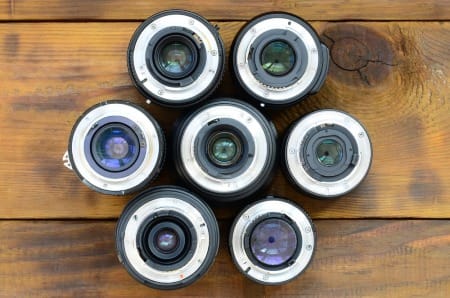
- Prime Lenses: Prime lenses with wide apertures, such as 50mm f/1.2, 85mm f/1.4, or 35mm f/1.4, are ideal for portraits and low-light conditions. These lenses produce beautiful bokeh (background blur), which isolates the subject and gives a romantic, dreamy quality to portraits of the bride and groom. They also excel in low light, which is essential for indoor ceremonies and dimly lit receptions.
- Zoom Lenses: Zoom lenses like the 24-70mm f/2.8 and 70-200mm f/2.8 are highly versatile, offering flexibility to capture both wide-angle shots and close-up details without changing lenses. The 24-70mm is excellent for capturing the entire wedding party or wide shots of the venue, while the 70-200mm is perfect for candid shots from a distance, allowing photographers to capture moments unobtrusively.
Having a combination of prime and zoom lenses in your kit allows you to cover a variety of perspectives, making your wedding photography more dynamic and complete.
Lighting Equipment: Flashes and Modifiers
Lighting can be unpredictable at weddings, especially in indoor settings or outdoor events that continue into the evening. Investing in lighting equipment such as on-camera flashes, off-camera flashes, and light modifiers will ensure you can capture consistently well-lit images throughout the day.
- External Flashes: An external flash, also known as a speedlight, is an invaluable tool for wedding photography. It provides additional lighting in dark settings, reduces harsh shadows, and allows you to balance ambient light with artificial light. Many photographers use speedlights with bounce capabilities to diffuse the light for a softer, more flattering effect.
- Light Modifiers: Modifiers like softboxes, diffusers, and reflectors can help soften flash output and create more natural lighting, which is ideal for close-up shots or portraits. A small portable softbox can be attached to a speedlight for softer, diffused light, while reflectors can help bounce light back onto the subject, especially useful in outdoor settings.
- Off-Camera Lighting: Some photographers use off-camera flash setups with wireless triggers to create dramatic, directional lighting, which can add a creative touch to the photos. This approach works particularly well for artistic shots of the couple or detailed shots of the venue after dark.
Stabilizers: Tripods and Gimbals
For photographers who also capture video or need to stabilize their shots, tripods, and gimbals are essential. Stabilizers ensure smooth, steady images and videos, helping create a professional look in every shot.
- Tripods: Tripods are useful for group shots, long exposure shots, or any situation where stability is required. A lightweight, portable tripod can be quickly set up for group photos, allowing you to step back and direct the scene. Tripods also help with low-light situations by allowing slower shutter speeds without introducing blur.
- Gimbals: For those providing video services, a gimbal offers smooth, stabilized footage. This is particularly useful for walking shots, such as capturing the couple as they walk down the aisle or stroll through a scenic location. Gimbals ensure that your video footage remains fluid and shake-free, adding a cinematic quality to wedding photography videos.
Memory Cards and Backup Solutions
Weddings are high-stakes events where every image counts, and there’s no room for memory card failures or storage issues. Having multiple high-capacity, fast memory cards, and a reliable backup solution is essential for wedding photography.
- High-Speed Memory Cards: Opt for UHS-II or CFexpress cards, as they have faster write speeds and allow for quick image saving, especially useful for cameras with high burst rates. This is essential when capturing moments like the first kiss or confetti toss, where every second counts.
- Backup Solutions: Dual card slots in cameras enable simultaneous backup, reducing the risk of data loss. For additional security, consider bringing a portable backup device, such as a small SSD, to periodically save images during breaks. Some photographers also use cloud backup services to create an additional layer of protection for the day’s captures.
Summary
Adding quality lenses, lighting equipment, stabilizers, and backup solutions to your camera kit enhances your ability to handle any scenario that arises during a wedding day. Each piece of gear serves a specific purpose in making your wedding photography more versatile, consistent, and professional. By carefully choosing and packing the right additional gear, photographers can focus on capturing every beautiful moment without being limited by technical challenges or environmental conditions.
Conclusion
Choosing the right camera and supporting gear is essential for delivering high-quality results in wedding photography. Each wedding presents unique challenges, from varying lighting conditions to fast-paced moments that can’t be missed, and having the right equipment ensures you’re ready for it all. The cameras covered in this guide offer a range of features suitable for different styles, from high-resolution options ideal for detailed portraits to compact, versatile cameras perfect for dynamic, on-the-go shooting. Matching your camera choice with additional accessories, like versatile lenses, reliable lighting gear, and stabilization tools, gives you the flexibility to adapt and capture every aspect of the day beautifully.
Investing in professional gear tailored for wedding photography not only enhances the quality of your work but also increases your confidence and efficiency, allowing you to focus on creating memorable, impactful images. With the right equipment, photographers can transition smoothly between scenes and handle unforeseen challenges, ensuring that they capture each significant moment, from the quiet, intimate exchanges to the grand, celebratory shots. Ultimately, having a well-rounded, reliable setup empowers photographers to deliver a complete visual story for couples to cherish for a lifetime. As you build or refine your wedding photography kit, consider these essential tools to elevate your craft and consistently produce outstanding work.
Thank you for visiting our site and being part of this journey with us! We rely on the generous support of visitors like you to continue providing high-quality. Your donation, no matter the size, helps us maintain the website and create more valuable resources for everyone.

